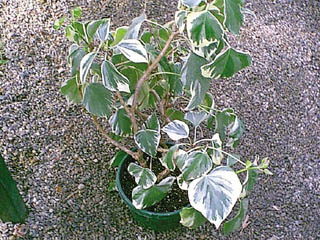Did you know we can clean our household air by just growing
common house plants?
Did you know we can clean our household air by just growing common house plants?
Two separate studies concluded that a variety of commonly sold house plants aid indoor air quality. This can help in a number of ways, including reducing the chances of catching the flu and colds and combating “stick-building syndrome.”
One study was concluded by the National Aeronautics and Space Administration, and the other was by Washington State University.
The NASA study found that house plants significantly reduced the level of some of the most common indoor pollutants, such as formaldehyde, benzene and trichloriethylene.
All can be found in modern furnishings, office equipment and building materials and cost the nation tens of billions of dollars per year in lost productivity and medical bills.
NASA began experimenting with house plants in 1973 and found plants help recycle air and water.
And we’re not talking about exotic expensive house plants, either. Also, you don’t have to turn your home or office into a tropical forest to gain some air-cleaning benefits.
All of the common house plants studied by NASA cleaned the air. The study found that philodendron, as well as hanging plants like spider plant and golden pothos, most effectively removed formaldehyde from the air.
Gerbera, commonly sold as Transvaal daisies, and chrysanthemums best removed benzene. Many other plants removed toxic chemicals from the air, including bamboo palm, peace lily, corn plants, mother-in-law’s tongue and English ivy to name a few.
NASA found that plants are able to purify air because of natural microbes living in their root system.
The plants draw air from their roots where the microbes break down the pollutants into harmless chemical substances that are then released back into the air through leaves.
It’s recommended that two medium-sized house plants be used for every 100 square feet of floor space.
However, the number also varies on the amount of contaminants, temperatures and the air circulation capabilities of a house or office.
One of the most common environmental problems in offices, in particular, is that they are sealed to improve energy efficiency. This results in air that is too dry, especially in the winter. As humidity drops, the incidence of colds and other viral infections rises.
The studies at Washington State University found that some house plants can significantly increase humidity levels.
Some house planted helped to keep humidity within the recommended range of 30 to 60 percent.
the house plant most efficient at boosting humidity was the peace lily, which was also singled out in the NASA study.
The peace lily, also known as Mauna loa, is a common upright foliage house plant. It offers bright green glossy leaves that are pointed, and plants bloom a beautiful white flower on slender talks.
It is fine for low-light areas, but does require more water than most house plants. The plant will let you know when it is in water distress by drooping leaves.
Of course, it’s best not to let it get into such distress before watering.
Other house plants found to be helpful include: bamboo palm, corn plant (Dracaena); mother-in-law’s tongue; English ivy; spider plant, split-leaf philodendron, gold pothos, diffenbachia and spathiyphylum.
All can be found in local nurseries. Some are uprights and other trail.
So, grow a few more house plants in your home or office. After all, it can’t hurt and it may help clean the air.










